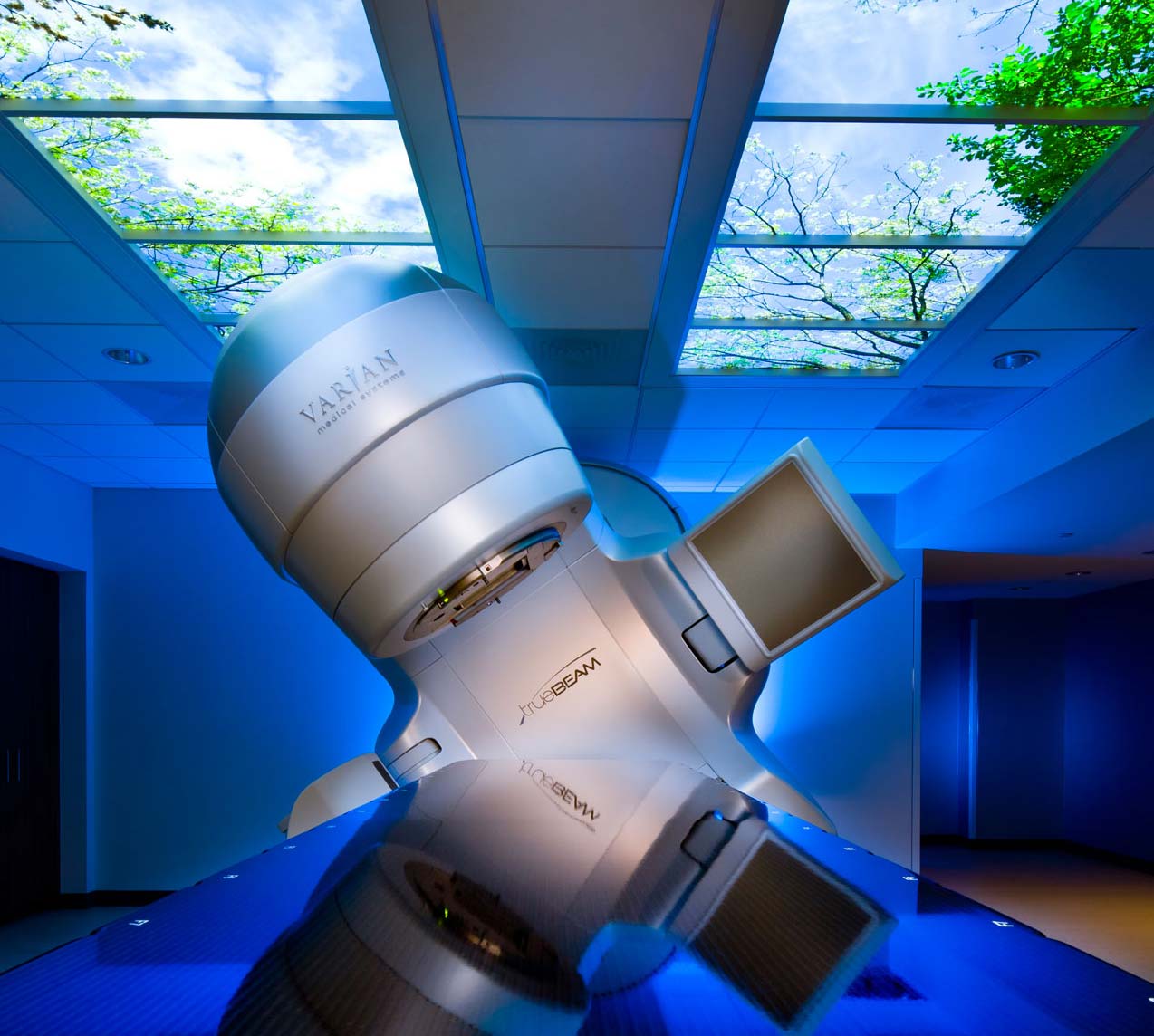Radiation Therapy
The Radiation Department at Penn Medicine Princeton Cancer Center uses precise and targeted high energy rays which damage cancer cells to fight cancer.
Radiation therapy is a local treatment that affects cancer cells only in the treated area and is usually given daily over several weeks. Radiation can come from a machine (external radiation) or from a small container of radioactive material implanted directly into or near a tumor (internal radiation). Our professional radiation oncology team and board certified radiation oncologist work closely together to develop an individualized radiation therapy treatment plan for each patient.
Radiation Treatment Techniques:
- Surface Guided Radiation Therapy (SGRT)
Align RT®, a system for delivering surface guided radiation (SGRT), helps to improve patient set-up and the accuracy of radiation treatment by tracking a patient’s position using 3D stereo camera units. - Deep Inspiration Breath Hold (DIBH)
Deep Inspiration Breath Hold (DIBH) is a technique to move the heart away from the breast during radiation therapy treatment, especially in patients with left sided breast cancer. This technique, combined with our advanced imaging technology, allows for the treatment beam to turn on and off with each deep breath. - High Dose Rate (HDR) Radiation Therapy
HDR offers additional treatment options as it differs from traditional modalities. HDR treats cancer by placing radioactive sources directly into or next to the cancer, which enables the staff to deliver a high dose with minimal impact to surrounding healthy tissue. HDR has proven to be a successful treatment for cancers of the prostate, cervix, endometrium, breast, skin, bronchus, esophagus, head and neck, and soft tissue sarcoma. - Space OAR Hydrogel
Space OAR Hydrogel is an option for men who undergo radiation treatment for prostate cancer. It acts as a spacer providing space between the rectum and the prostate, making it much less likely that the rectum is exposed to radiation. - Prone Breast Radiation Therapy
Women requiring treatment for breast cancer may have the option to be treated in the prone position. Using a specially designed breast board allows the patient to lay on their stomach with the affected breast hanging away from the body and the non-affected breast out of the field of treatment against the body. This position minimizes radiation exposure to the heart and lungs and reduces future complications to these areas. - Prostate Brachytherapy
Prostate brachytherapy involves the use of radioactive sources placed directly in the prostate gland. This treatment method delivers radiation to the cancer cells resulting in less damage to the surrounding healthy tissue. Prostate brachytherapy procedures include high dose rate (HDR) treatment, delivered over several sessions, or low dose rate (LDR), which involves implanting permanent seeds in the prostate gland to release radiation over several months then becoming inactive. - TrueBeam™ Linear Accelerator
The linear accelerator delivers radiation treatments with unparalleled precision and speed, reduces daily treatment times, improves targeting accuracy, and allows for great versatility in treatment design.
This supports Intensity Modulated Radiation Therapy (IMRT) techniques that allow physicians to tailor each radiation beam to the exact shape of the tumor through the movement of more than 100 individual computer-controlled shields built into the machine. The accelerator can even take X-rays or CT scan images to determine the precise location of the tumor.
In addition, the TrueBeam™ allows for Image Guided Radiation Therapy (IGRT), and supports techniques such as Stereotactic Radiosurgery (SRS), Stereotactic Radiation Therapy (SRT) and Stereotactic Body Radiation Therapy (SBRT) that deliver radiation with pinpoint precision to tumors in appropriate patients using only a few treatments to accomplish what used to require weeks of therapy to achieve, or required the use of specialized equipment.
- Y90
Yttrium-90 microspheres (Y-90) is radioembolization treatment that is minimally invasive targeted treatment for both primary and secondary cancers of the liver. Treatment is delivered by a board certified interventional radiologist in an outpatient setting.

